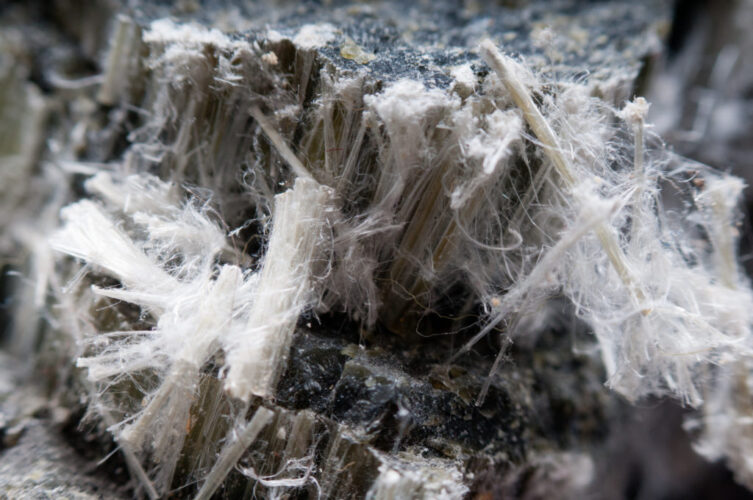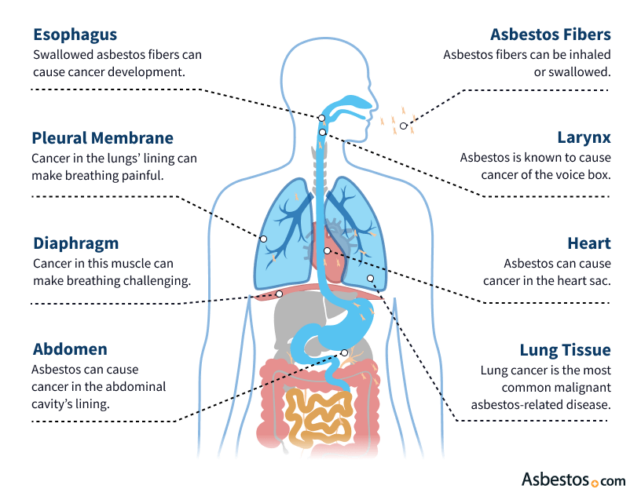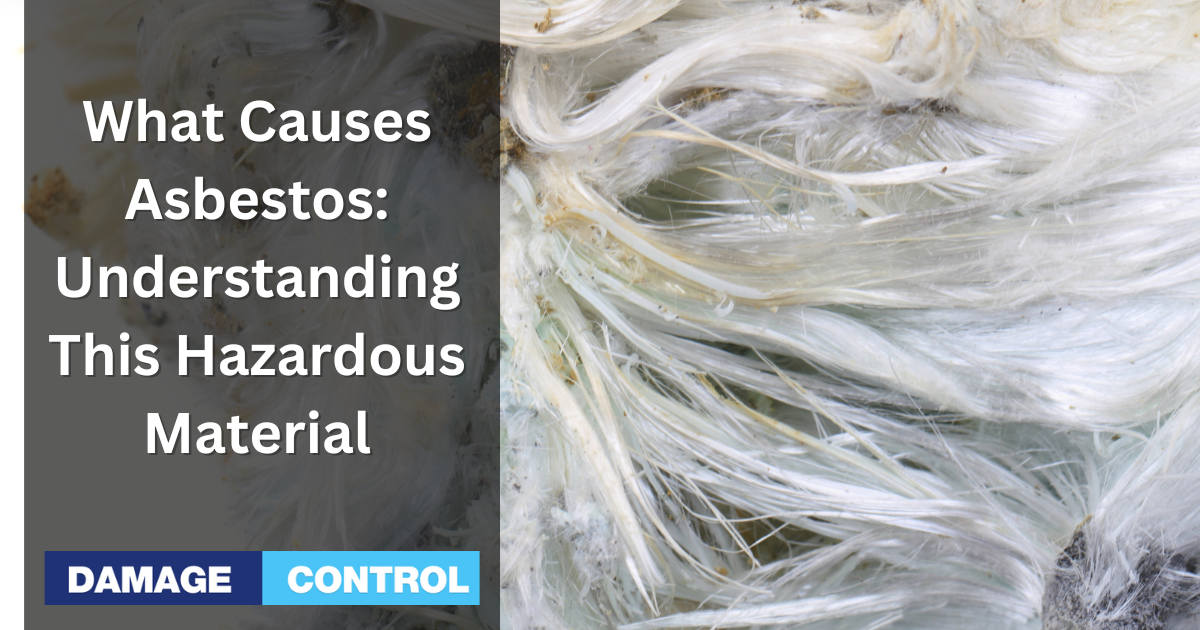What Causes Asbestos?
Asbestos is a naturally occurring mineral that was widely used in construction and other industries for decades. Despite its popularity, asbestos is now known to be a dangerous substance that can cause serious health problems, including cancer and lung disease. In this article, we will explore the causes of asbestos and how it can affect our health.
Asbestos fibers are very small and can easily become airborne when disturbed. This is what makes asbestos so dangerous. When inhaled, the fibers can become lodged in the lungs and other parts of the body, leading to serious health problems. Asbestos exposure is most commonly associated with workplace environments, but it can also occur in homes and other buildings that contain asbestos-containing materials.
The primary cause of asbestos exposure is the use of asbestos-containing materials in construction and other industries. These materials were commonly used for insulation, roofing, and fireproofing, among other things. Asbestos was also used in a variety of consumer products, such as brake linings and insulation for electrical wiring. While the use of asbestos has declined in recent years, it is still present in many older buildings and products.
What is Asbestos?

Asbestos is a naturally occurring mineral that is made up of tiny fibers. These fibers are resistant to heat, fire, and chemicals, which made asbestos a popular building material for many years. Asbestos was used in a wide range of products, including insulation, roofing materials, floor tiles, and brake pads.
The use of asbestos dates back to ancient times, but it wasn't until the Industrial Revolution that the demand for asbestos really took off. Asbestos was cheap, plentiful, and easy to work with, which made it an attractive option for manufacturers and builders. Unfortunately, it wasn't until much later that the health risks associated with asbestos exposure were fully understood.
When asbestos fibers are inhaled, they can become lodged in the lungs and cause a range of health problems. Asbestos exposure has been linked to lung cancer, mesothelioma, and asbestosis, a chronic lung disease that can cause shortness of breath, coughing, and chest pain.
Despite the known health risks, asbestos was widely used in construction and manufacturing until the 1970s. Today, asbestos is banned in many countries, including the United States, but it can still be found in older buildings and products.
If you suspect that you may have been exposed to asbestos, it's important to talk to a doctor. Early detection and treatment can help to minimize the long-term health effects of asbestos exposure. Additionally, if you're planning to renovate an older building, having it inspected for asbestos before beginning any work is important.
Types of Asbestos
What are the different types of asbestos? Asbestos is a group of naturally occurring minerals that are known for their heat resistance and durability. There are six types of asbestos, but only two are commonly used in commercial applications: chrysotile and amphibole. Here's a closer look at each type:
Chrysotile: This type of asbestos is also known as white asbestos. It is the most commonly used type of asbestos and accounts for about 95% of all asbestos used in the United States. Chrysotile fibers are curly and flexible, which makes them ideal for use in materials that need to be woven or spun.
Amphibole: This type of asbestos is less common than chrysotile and is more dangerous. There are several types of amphibole asbestos, including amosite, crocidolite, tremolite, anthophyllite, and actinolite. Amphibole fibers are straight and needle-like, which makes them more likely to penetrate the lungs.
Crocidolite: This type of amphibole asbestos is also known as blue asbestos. It is the most dangerous type of asbestos and is associated with a high risk of mesothelioma. Crocidolite fibers are thin and brittle, which makes them easy to inhale.
Amosite: This type of amphibole asbestos is also known as brown asbestos. It is commonly used in insulation materials and is associated with a high risk of lung cancer. Amosite fibers are straight and needle-like, which makes them more likely to penetrate the lungs.
Tremolite: This type of amphibole asbestos is often found in talc deposits and is associated with a high risk of mesothelioma. Tremolite fibers are thin and brittle, which makes them easy to inhale.
Anthophyllite: This type of amphibole asbestos is less common than other types of asbestos and is associated with a lower risk of disease. Anthophyllite fibers are short and stubby, which makes them less likely to penetrate the lungs.
Where is Asbestos Found?
Asbestos is a naturally occurring mineral that has been used in various industries for its heat-resistant properties. It can be found in many products and materials, including building materials, automotive parts, and household items. Here are some common places where asbestos can be found:
Building Materials
Asbestos was used in many building materials, including insulation, roofing, flooring, and cement products. It was commonly used in homes built before 1980. If your home was built before then, it is possible that asbestos-containing materials were used during construction. Asbestos can also be found in older commercial buildings, such as schools and hospitals.
Automotive Parts
Asbestos was used in many automotive parts, including brake pads, clutch facings, and gaskets. If you own an older vehicle, it is possible that it contains asbestos-containing parts. Mechanics who work on older vehicles may also be at risk of exposure.
Household Items
Asbestos was used in many household items, including hair dryers, ironing boards, and crock pots. It was also used in some types of clothing, such as fire-resistant gloves and aprons. These items are no longer produced with asbestos, but older items may still be in use.
Natural Deposits
Asbestos can also be found in natural deposits in the earth's crust. Some areas have higher levels of asbestos than others, and people who live in these areas may be at risk of exposure. Asbestos can be released into the air when these deposits are disturbed, such as during mining or construction activities.
It is important to note that not all products or materials that contain asbestos are dangerous. Asbestos only becomes a health risk when disturbed and the fibers are released into the air. Suppose you suspect that you have asbestos-containing materials in your home or workplace. In that case, it is important to have them tested by a professional and to take appropriate measures to prevent exposure.
How Does Asbestos Exposure Occur?

Asbestos exposure occurs when asbestos fibers are released into the air and inhaled or ingested. The fibers are microscopic and can remain airborne for long periods, making it easy to inhale or ingest them without realizing it. Occupational and environmental exposure can occur in two main ways: asbestos exposure.
Occupational exposure is the most common cause of asbestos exposure. Workers in the construction, shipbuilding, and manufacturing industries are at a higher risk of exposure. These workers may come into contact with asbestos fibers when handling or removing asbestos-containing materials. The fibers can be released into the air when these materials are disturbed, such as during renovation or demolition work.
Environmental exposure occurs when asbestos fibers are released into the air from natural deposits or from the breakdown of asbestos-containing materials. People who live near asbestos mines or processing plants may be exposed to high levels of asbestos fibers in the air. Additionally, people who live or work in buildings with asbestos-containing materials may be exposed to low levels of asbestos fibers over a long period.
Asbestos exposure can also occur through secondary exposure. This occurs when someone comes into contact with asbestos fibers that have been brought home on the clothing or equipment of someone who works with asbestos. For example, family members of workers who handle asbestos may be exposed to asbestos fibers when they come into contact with the worker's clothing.
It is important to note that asbestos exposure does not always lead to asbestos-related diseases. The risk of developing an asbestos-related disease depends on the level and duration of exposure, as well as individual factors such as age and overall health. However, it is important to take precautions to minimize exposure to asbestos to reduce the risk of developing these diseases.
Health Risks Associated with Asbestos Exposure
Asbestos exposure can cause various health risks, including lung cancer, mesothelioma, and asbestosis. These diseases are often not diagnosed until many years after the initial exposure to asbestos. Here are some of the health risks associated with asbestos exposure:
Lung Cancer
Asbestos exposure can cause lung cancer, which is the leading cause of cancer-related deaths in the United States. According to the National Cancer Institute, people who work with asbestos are seven times more likely to develop lung cancer than those who do not.
Mesothelioma
Mesothelioma is a rare and aggressive cancer that affects the lining of the lungs, chest, abdomen, or heart. It is almost always caused by asbestos exposure. The symptoms of mesothelioma can take 20-50 years to develop, and there is currently no cure for the disease.
Asbestosis
Asbestosis is a chronic lung disease that is caused by inhaling asbestos fibers. It can cause shortness of breath, coughing, and permanent lung damage. Asbestosis usually develops after years of exposure to high levels of asbestos.
Other Cancers
Asbestos exposure can also cause cancer of the larynx, ovary, pharynx, stomach, and colorectum. The risk of developing these cancers increases with the amount and duration of asbestos exposure.
Secondhand Exposure
People who are exposed to asbestos secondhand, such as family members of workers who handle asbestos, can also develop asbestos-related diseases. Asbestos fibers can be carried home on clothing, skin, and hair, and can be inhaled by others.
Asbestos Regulations and Standards
What are the regulations and standards surrounding asbestos? In the United States, asbestos is regulated by several federal agencies, including the Environmental Protection Agency (EPA), the Occupational Safety and Health Administration (OSHA), and the Consumer Product Safety Commission (CPSC).
OSHA sets the permissible exposure limits (PELs) for asbestos in the workplace. The PEL for asbestos is 0.1 fibers per cubic centimeter of air (f/cc) averaged over an 8-hour workday. OSHA requires employers to provide training, protective equipment, and medical surveillance for workers who may be exposed to asbestos above the PEL.
The EPA regulates asbestos under the Toxic Substances Control Act (TSCA) and the Clean Air Act (CAA). The TSCA requires manufacturers and importers to notify the EPA before introducing new asbestos-containing products into the market. The CAA regulates the emissions of asbestos from stationary sources, such as factories and power plants.
The CPSC regulates consumer products that may contain asbestos, such as certain types of insulation, roofing materials, and automotive parts. The CPSC has banned the use of asbestos in some products, such as artificial fireplace embers and wall patching compounds.
State governments also have their own regulations and standards for asbestos. Some states have more stringent requirements than the federal government, such as lower PELs or stricter notification and disposal requirements.
In addition to these regulations, there are also guidelines and best practices for handling asbestos-containing materials. The EPA has developed the Asbestos Hazard Emergency Response Act (AHERA) to regulate the management of asbestos in schools. The National Institute for Occupational Safety and Health (NIOSH) has developed guidelines for the safe handling of asbestos in the workplace.

